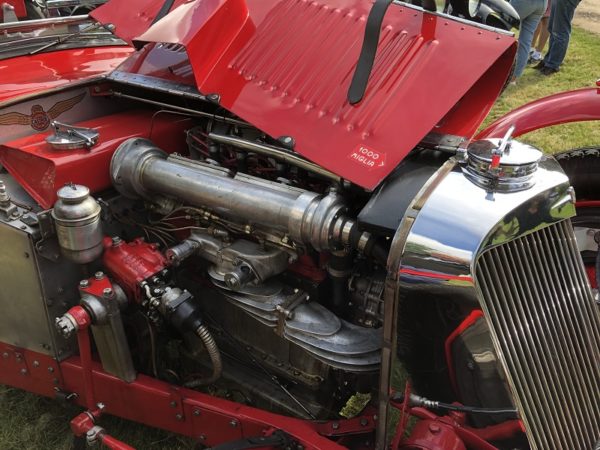
Welcome to Part Two of our report on VSCC Prescott on 7th and 8th August.
In Part One we looked at the racers. Now we’ll look at the pre-war cars that we found in the car parks. Part Three will cover the post-war cars.
As in Part One, we’ll give you a mix of pictures of the cars, stuff we know about them and stories we heard on the day. We hope you enjoy Part Two: The Pre-War Cars…
1936 Squire Supercharged Lightweight
Squire Motors was founded in 1931 in Henley-on-Thames by the 21-year-old Adrian Squire, after he started to draw ideas for the car at the age of only fourteen.
Only six or seven Squires were ever built. This one, JB 8776, was the sixth created, and the only factory lightweight. With extensive period competition history, it won an award at the 1936 RAC Rally. Its 1,496cc inline-four OHC engine is a British Anzani R1 (see our headline picture). It was the star of the Fiskens display at this year’s VSCC Prescott.
The Squire’s impressive dashboard, and its ENV pre-selector gearbox with its steering-wheel-mounted change lever.
1924 Vauxhall OE 30-98: twin cars for twin brothers
This lovely pair of OE 30-98 machines were built only one month apart. The one on the right is the elder, and has pressurised fuel-tank feed. The one on the left has a more modern Autovac. Appropriately they belong to the twin Card brothers, Peter and David. They had motored to Prescott without a single problem – but, trying to restart his, David had a few moments before he could get fuel to flow. Then all was well, and both cars departed in splendour.
1934 Hotchkiss Cabourg 413
Seen in the Bonhams display, this sound but far-from-concours Hotchkiss was a delight – and not estimated at a large sum for the 5th September auction. The Cabourg 413 was a four-cylinder 13CV model and, like all Hotchkiss cars from the pre-war period, despite its unassuming appearance, was a a true Grand Routier capable of long mileages at high speeds across the continent. This will be a bargain for somebody.
1938 Riley Sprite 12/4
This was the last of the true Riley sports cars, with full front wings and a “fencer mask” grille. The engine was a special version of the 4-cylinder 1.5-litre 12/4 with different cams, magneto ignition, bigger sump capacity and new water pump.
1927 Swift P-Type
The Swift Motor Company built cars from 1900 to 1931 in Coventry. This is a fine example of a modest but sturdy Swift P-Type, a 1,190cc 4-cylinder side-valve car built between 1926 and 1928.
After making a bewildering array of models before and after World War I, Swift simplified their range and in 1923 launched the 1,097cc Q-Type with coil ignition, electric starting, optional front wheel brakes and a top speed of 55 mph. Standard front wheel brakes were added in 1926 and the engine was bored out to 1,190 cc to become the P-Type that we see here. The engine grew again to 1,307cc in 1929 when the car became the P2.
1935 Frazer Nash BMW 319
AFN Ltd became importers and assemblers of BMW cars in 1934 and branded them Frazer Nash BMW. This 6-cylinder 1.9-litre 319 is one of those. The 319 was introduced in 1935 as a larger-engined (1,911cc) development of the 315. These two models were the largest BMWs until the 326 of 1936.
1937 Bentley 4¼-litre
This Bentley immediately grasped attention with its stylish coachwork by the Belgian coachbuilders Vesters & Neirinck. Its owners were proud to point out the rare headlamps, also by Belgian makers: Willocq Bottin of Brussels.
The Willocq-Bottin Supralux headlamps with their distinctive WB monogram on the top of the chrome surround
Ford Model A
We know nothing of the history of this car; it was sitting all alone on the upper field. But we liked it very much and we had to include it.
Rolls-Royce Phantom I
We end Part Two with a very late find. Right at the end of Sunday, as the last cars were leaving, we spotted this ‘rolling chassis’ making some rather noisy progress across the Orchard. Correctly identifying it as a Phantom I, we asked whether the owner would be building something interesting on the chassis. he replied: “No, it’s finished.” Which, at the end of two excellent days, was an appropriate comment – if taken out of context.
But we are not finished. Keep an eye out on this website for Part Three: The Post-War Cars.







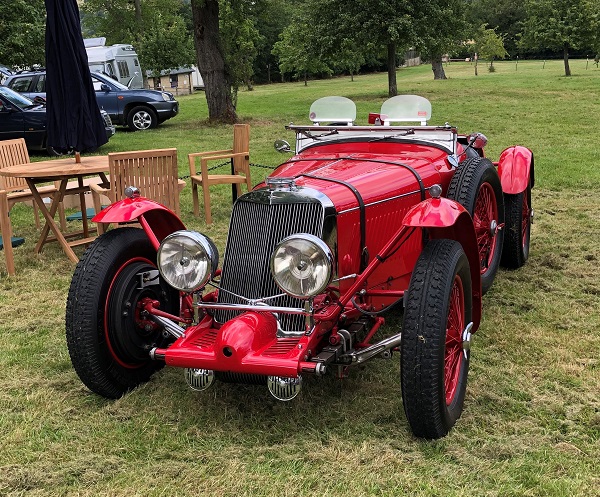
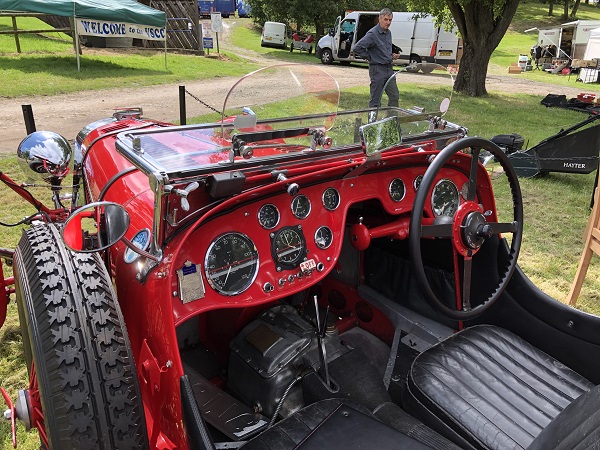
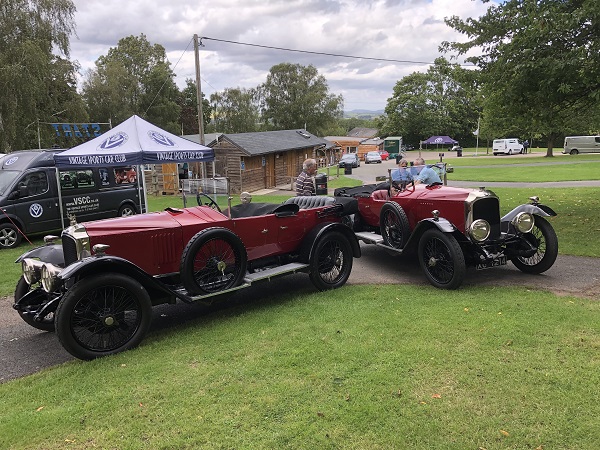
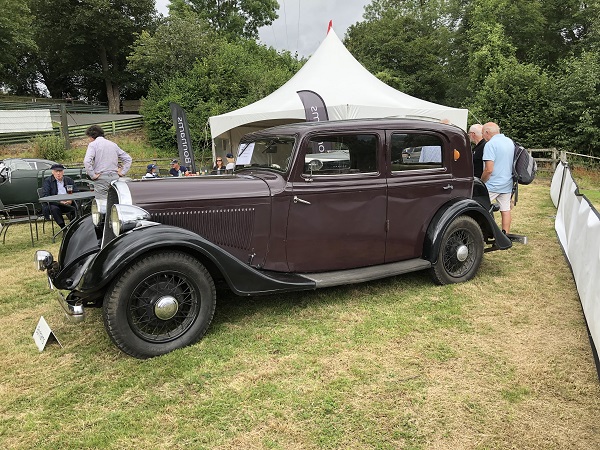

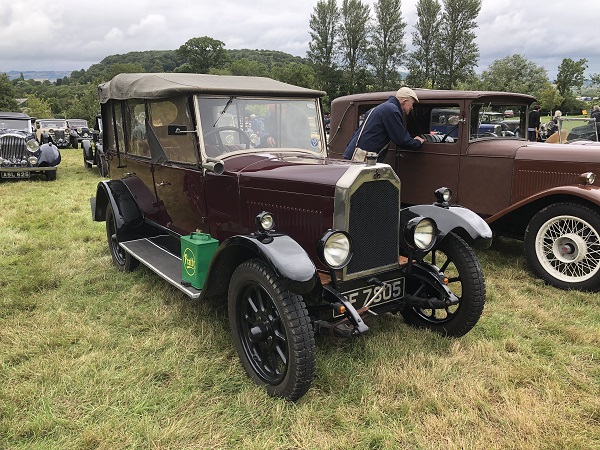
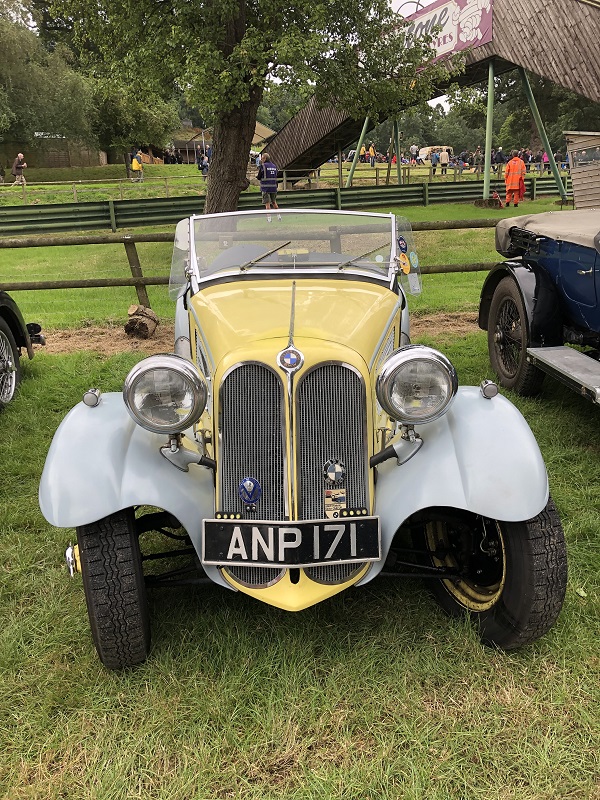
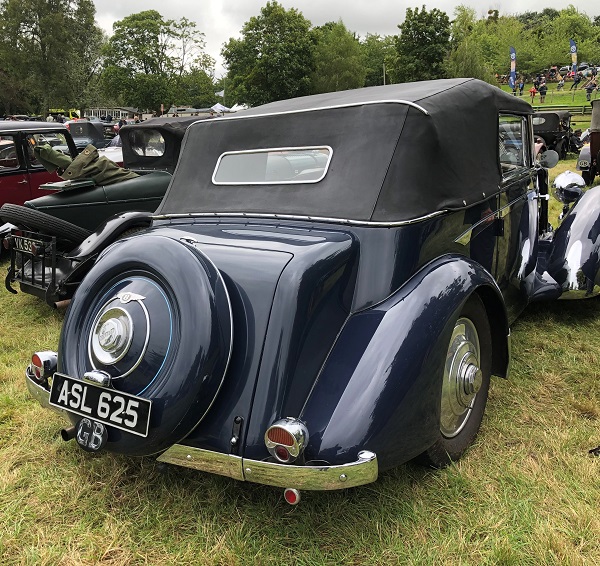
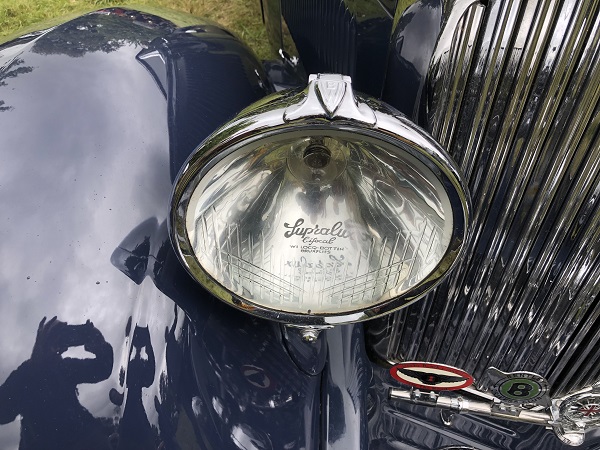
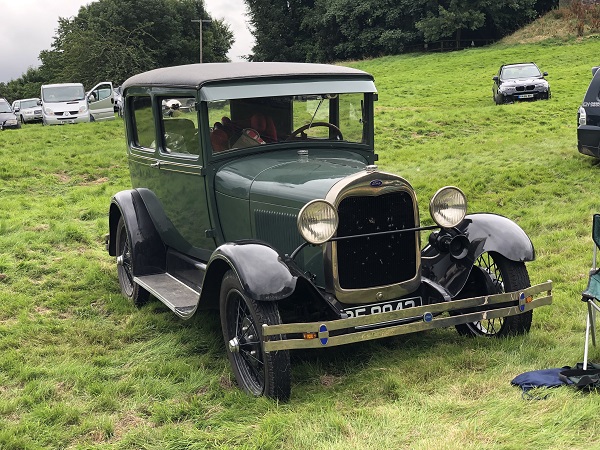
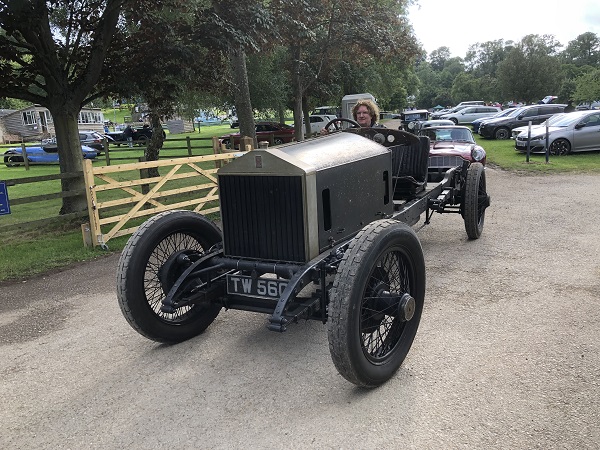
Leave a Comment